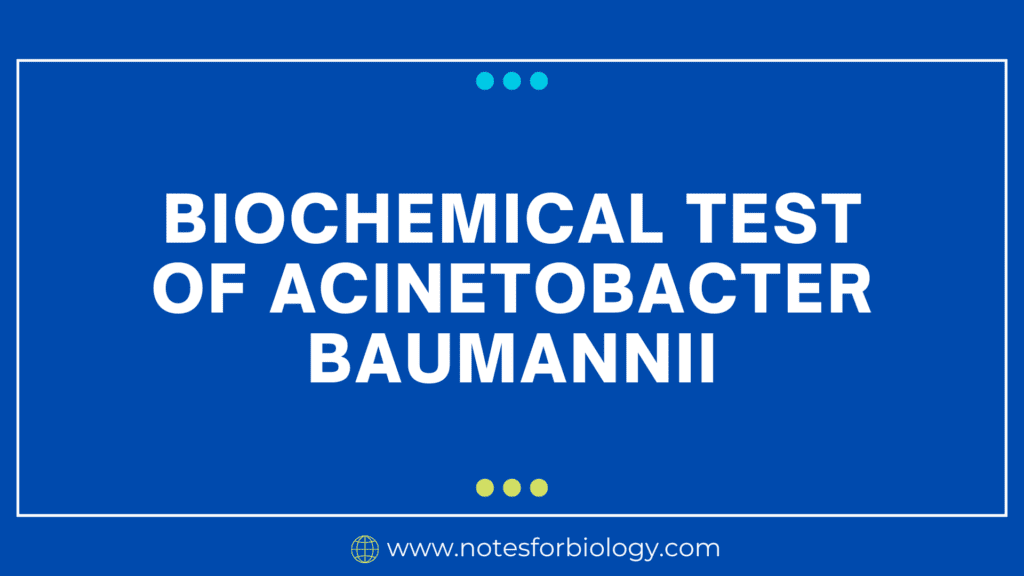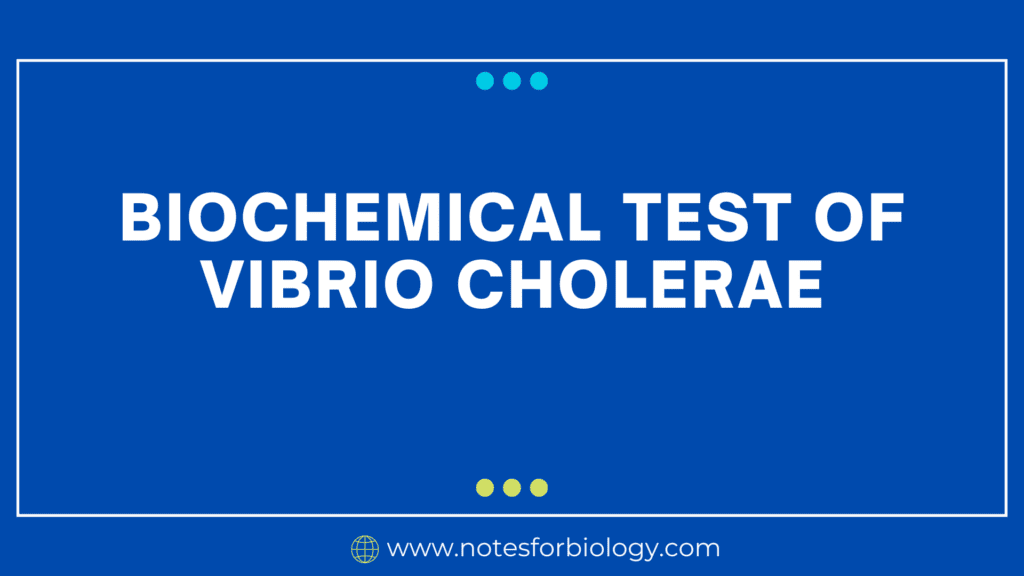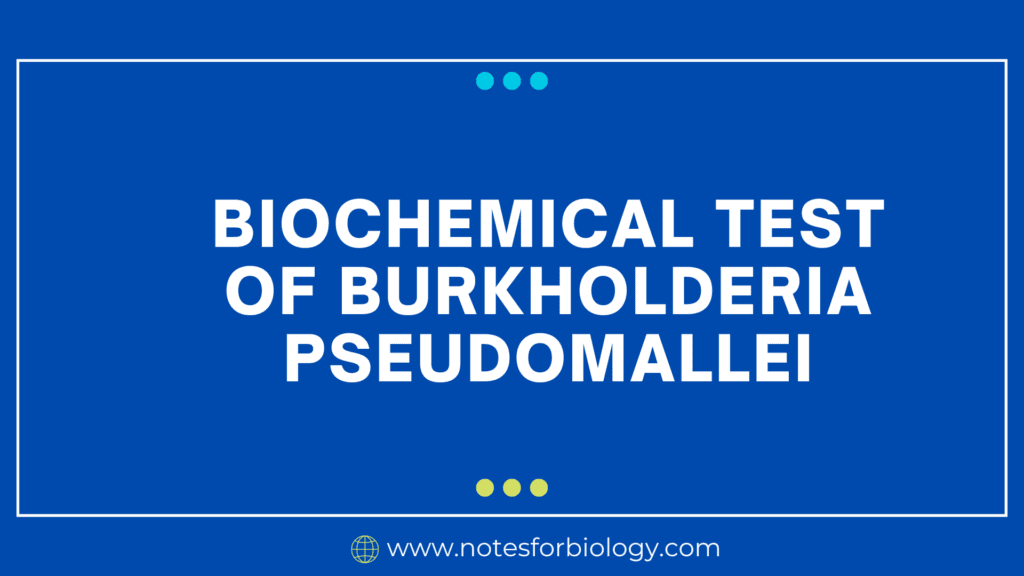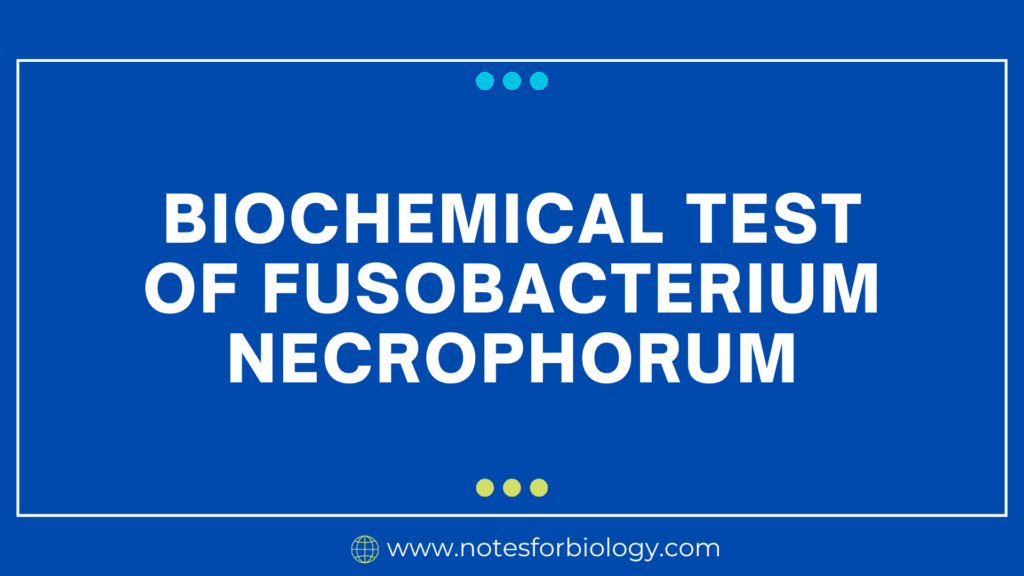Gram-negative Acinetobacter baumannii is a well-known cause of serious hospital-acquired infections and a major contributor to antibiotic resistance. For effective clinical management, this pathogen must be accurately identified. The oxidase test (negative), the catalase test (positive), the glucose oxidation test (positive under oxidative conditions), and the growth at 42°C test (positive) are important biochemical tests used to identify A. baumannii. It is non-motile and frequently indole-, urease-, and nitrate reduction-negative.
Table of Contents
Definition

Acinetobacter baumannii is a non-fermentative, gram-negative bacterium that is frequently connected to infections acquired in hospitals. Because A. baumannii looks similar to other Acinetobacter species, it can be difficult to identify. To differentiate A. baumannii from other organisms, a number of biochemical tests are utilized.
Here is an overview of the biochemical tests commonly used for identifying A. baumannii:
1. Oxidase Test
An essential biochemical test for identifying the gram-negative bacterium Acinetobacter baumannii, which is frequently linked to illnesses acquired in hospitals, is the oxidase test. The test looks for the enzyme cytochrome c oxidase, which is part of the electron transport chain in certain bacteria. A reagent, such as tetramethyl-p-phenylenediamine dihydrochloride, is applied to a sample of the bacterial culture in order to perform the oxidase test. The reagent will turn dark purple, signifying a positive result, if the bacterium generates cytochrome c oxidase. Nevertheless, A. baumannii is oxidase-negative, which means that it does not manufacture this enzyme and thus the reagent either stays colorless or changes very little.
2. Catalase Test
Acinetobacter baumannii, a gram-negative bacterium well-known for its involvement in hospital-acquired infections and multidrug resistance, can be identified using the catalase test, a crucial biochemical assay. This test looks for the catalase enzyme, which converts hydrogen peroxide to oxygen and water. A drop of hydrogen peroxide is combined with a small amount of the bacterial isolate to conduct the catalase test. Effervescence, or quick bubbling when oxygen is released, is a sign that the bacteria are producing catalase. Because A. baumannii is catalase-positive, it produces catalase and reacts to hydrogen peroxide by bubbling visibly.
3. Glucose Oxidation
Acinetobacter baumannii is a gram-negative bacterium that is frequently implicated in hospital-acquired illnesses. The glucose oxidation test is essential for its identification. The purpose of this test is to evaluate the bacterium’s aerobic glucose oxidation capacity. When oxygen is present at the top of the medium, A. baumannii usually exhibits positive glucose oxidation, creating acid without gas and leaving a yellow hue behind. This sets it apart from bacteria that create acid throughout the medium, known as fermentative bacteria. In addition to other tests such as the catalase test (positive) and oxidase test (negative), the glucose oxidation test aids in the precise identification of A. baumannii, hence promoting efficient clinical care.
4. Growth at 42°C
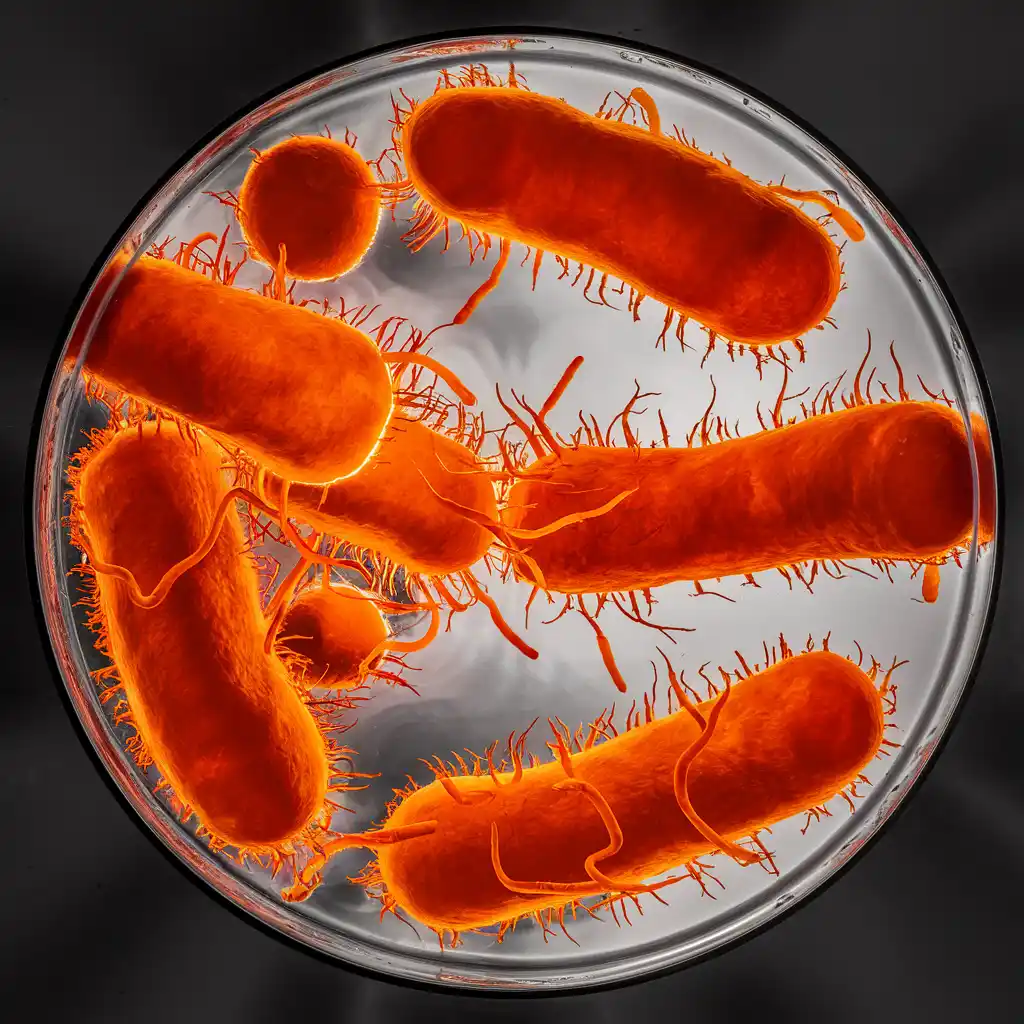
Acinetobacter baumannii is a gram-negative bacterium that is frequently linked to hospital-acquired infections. One of its unique characteristics is its capacity to grow at 42°C. A. baumannii can survive at this high temperature, which makes it easier to identify than many other Acinetobacter species. Microbiologists can distinguish A. baumannii from other closely related organisms that grow poorly at 42°C thanks to its vigorous growth when grown at this temperature. Accurately diagnosing A. baumannii in clinical settings requires this feature in addition to other biochemical tests such as the glucose oxidation test (positive) and the oxidase test (negative).
5. Motility
Generally speaking, Acinetobacter baumannii is not motile; it lacks flagella and other mobility-related features. It differs from certain motile gram-negative bacteria due to this feature. To help distinguish itself from motile organisms, A. baumannii usually does not exhibit active movement across semisolid or liquid medium in laboratory settings. Although bacterial species can differ in their motility, A. baumannii’s non-motility is a noteworthy characteristic that helps identify it in clinical microbiology labs.
6. Nitrate Reduction
In Acinetobacter baumannii, nitrate reduction is a biochemical characteristic that can vary and frequently has unfavorable effects. It follows from this that A. baumannii usually does not convert nitrate to nitrite or other nitrogenous substances. This trait helps identify A. baumannii in clinical microbiology labs when paired with additional testing, albeit there are exceptions. It is noteworthy because nitrate reduction exhibits variability across different species of bacteria, and the unfavorable outcomes observed in A. baumannii align with its biochemical characteristics.
7. Urease Test
Usually, Acinetobacter baumannii does not produce the urease enzyme, as evidenced by the negative findings of the urease test. The hydrolysis of urea by urease-positive bacteria results in the production of ammonia and carbon dioxide, which elevates the medium’s pH and changes its color. Because A. baumannii lacks this ability, the urease test is a crucial diagnostic tool for differentiating it from urease-positive species. This trait helps identify A. baumannii in clinical microbiology labs accurately, along with other biochemical assays.
8. Indole Production
Since, Acinetobacter baumannii lacks the enzyme tryptophanase, which hydrolyzes tryptophan into indole, ammonia, and pyruvic acid, it is usually negative for indole synthesis. One important biochemical test for microbiological identification is the indole test. The biochemical profile of A. baumannii is consistent with a negative result for indole production, which helps distinguish it from bacteria that produce indole. In clinical microbiology labs, this trait helps with the precise identification of A. baumannii when paired with additional tests.
9. Citrate Utilization
Positive citrate utilization indicates that Acinetobacter baumannii can use citrate as its exclusive carbon source. Simmons citrate agar is used to measure this characteristic because A. baumannii grows there and turns the medium blue, showing the consumption of citrate. This feature sets A. baumannii apart from other bacteria that aren’t able to use citrate. In clinical microbiology laboratories, positive citrate usage aids in the precise identification of A. baumannii in conjunction with other biochemical assays.
10. MacConkey Agar
Usually growing on MacConkey agar, Acinetobacter baumannii produces colorless colonies because it does not digest lactose. In microbiology labs, MacConkey agar is a widely used selective and differential media. A. baumannii appears as colorless or transparent colonies on this medium, showing its inability to ferment lactose, whereas lactose-fermenting bacteria generate pink or crimson colonies due to acid generation. This trait facilitates the precise identification of A. baumannii in clinical situations, in conjunction with further biochemical assays.
For more precise identification, these tests are frequently combined with molecular techniques like PCR and MALDI-TOF MS (Matrix-Assisted Laser Desorption/Ionization-Time of Flight Mass Spectrometry). Given the multi-drug resistance profile of A. baumannii, molecular techniques are especially helpful since they offer fast and accurate identification, which is essential for controlling infections caused by the pathogen.
Frequently Asked Question(FAQ)
What are the key biochemical tests used for identifying Acinetobacter baumannii?
Several key biochemical tests are commonly employed to identify Acinetobacter baumannii: Oxidase Test, Catalase Test, Glucose Oxidation Test, Growth at 42°C, Motility, Nitrate Reduction, Urease Test, Indole Production, Citrate Utilization, MacConkey Agar.
How does Acinetobacter baumannii become resistant?
Several antibiotics can be resisted by Acinetobacter baumannii by enzymatic inactivation, biofilm development, gene acquisition, mutations, and efflux pumps.
Related Articles

